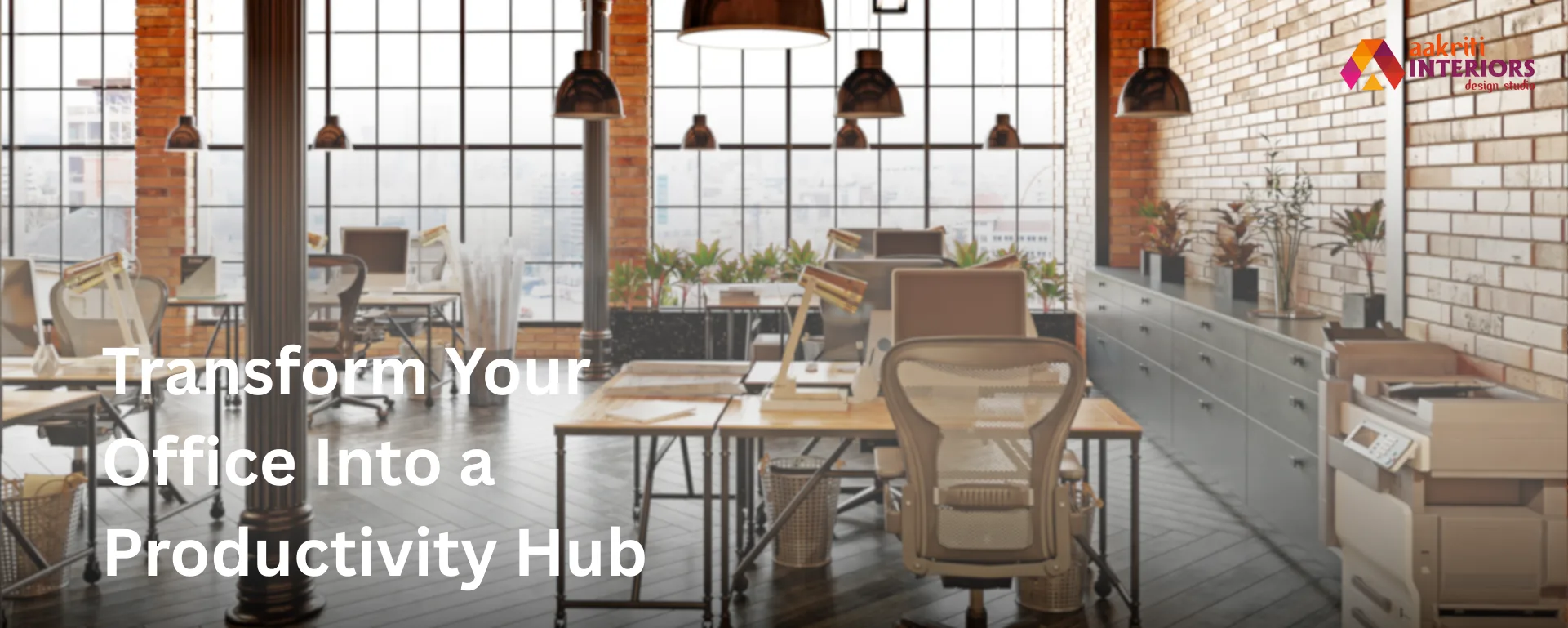September 15, 2025

Want to boost how well your employees work? Changing your office's inside look could be the answer. Good space plans, comfy furniture, and great lighting can make a workplace that gets people going and helps them get more done. Interior designers in Ranchi suggest using design to help people focus, work together better, and feel good. Make simple changes to how your office space is set up, and you might see big improvements in your business.
Office design has moved beyond just desks and chairs. Now, it's about encouraging teamwork, smooth workflows, and concentration. Companies are finding a balance by using open layouts where they make sense and adding quiet areas for when people need to focus. A good interior designer in Ranchi can figure out what your team needs and plan your space well. Instead of lots of small cubicles, think about a mix of shared tables and breakout spots. This lets workers pick the space that works best for them. Giving people this kind of choice can really boost how well they work and keep them happy. When you plan an office well, you can boost both creativity and efficiency.
Employee comfort greatly impacts productivity. Things like ergonomic chairs, adjustable desks, and well-placed monitors can cut down on tiredness, back problems, and other discomforts at work. Paying for furniture that fits people, instead of forcing them into awkward positions, is a really useful change. Ranchi interior experts often point out how posture and ergonomics affect energy, decisions, and overall health. Even simple fixes, such as footrests or better lighting for computer work, can really boost focus. Using ergonomic ideas isn't just a fad—it's key to a healthier, more productive office. Terms like healthy workspace and employee comfort show why this method has staying power.
Good lighting is more important in an office than you might think. Natural light can help reduce eye strain, keep people awake, and make them feel happier. Bad lighting, on the other hand, can make people tired and unable to focus. Instead of just using bright overhead lights, think about using a mix of daylight, task lighting, and ambient lighting. For example, putting desks near windows and using different types of lighting can make the office feel more welcoming. An interior designer in Ranchi might recommend using LED lights that save energy and look like natural daylight. This can help keep the lighting consistent throughout the day. When you consider the workplace atmosphere and visual comfort, you realize how lighting can turn an office into a place where people enjoy working and being productive.
Modern workers do best when communication is easy. Great teamwork happens in spaces built for it, like brainstorming corners, chill lounges, or meeting pods. Also, good break areas help people relax and get ready to work again. When offices balance work and relaxation, they become flexible and energetic. Companies now understand relaxation is important for keeping productivity high. Team synergy and creative hubs show how planned design can support teamwork and keep energy up. When designed well, these spaces help workers perform well and come up with new ideas.
Colors can change how we feel and act. Blue can make you feel calm and help you focus, while yellow can boost creativity and make you more optimistic. Neutral colors can create balance, and pops of bright colors can add energy to a space. Interior designers often suggest using color carefully, depending on what the department or activity is in a workspace. For example, a finance department might do well with stable, softer colors, while a marketing team might do better in brighter, more stimulating colors. The idea is not to overwhelm, but to help people be more productive through visual cues. Understanding things like color psychology and the emotional impact of design shows us how small color changes can impact motivation and focus, and turn regular rooms into inspiring places to work.
Today's offices need to keep up with the times. With hybrid work, growing teams, and new tech, your space needs to be flexible. Think movable walls, modular furniture, and meeting rooms that can change shape. This way, you can adapt without spending a ton of money or starting from scratch. Interior design is now about creating spaces that will grow with your company, which saves money and keeps your office useful for years to come. Flexibility isn't about changing things all the time, it’s about being ready for what’s next. When searching for modular office design and future-ready workspace, keep in mind that adaptability is super important for long-term productivity.
Companies that care about well-being tend to have happier, more productive people. Things like indoor plants, natural stuff, and designs that clean the air help make for a healthier space. Even just seeing green views or calming art can lower stress. When you add things that focus on health, it shows workers that you value them as people, not just for the work they do. This builds loyalty and better work over time. Being healthy shouldn't be something extra; it should be a key part of how an office is set up. Businesses understand that putting money into healthy spaces means putting money into productivity that lasts.
Updating your office isn't just about making it look good; it's about creating a space that works for everyone. Simple changes like better layouts, comfy chairs, good lighting, and wellness programs can make a big difference. When your office is designed with people in mind, it can really help your business do better.